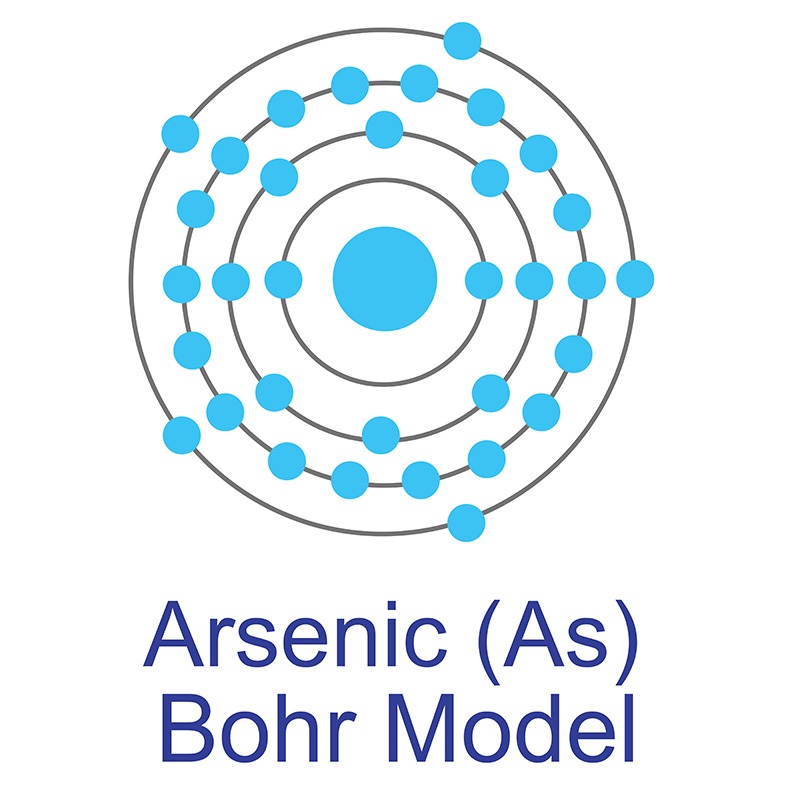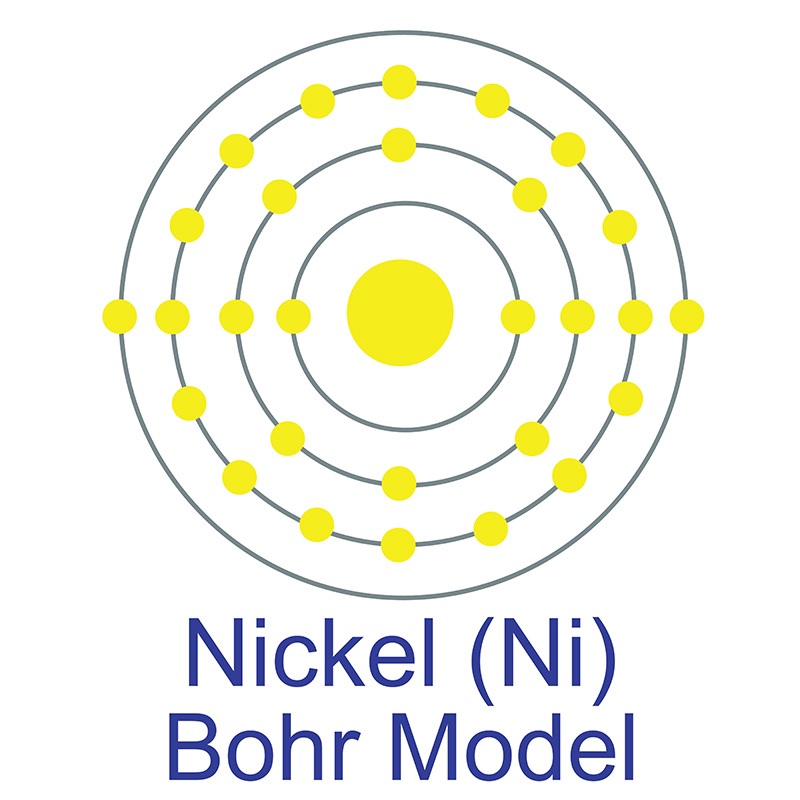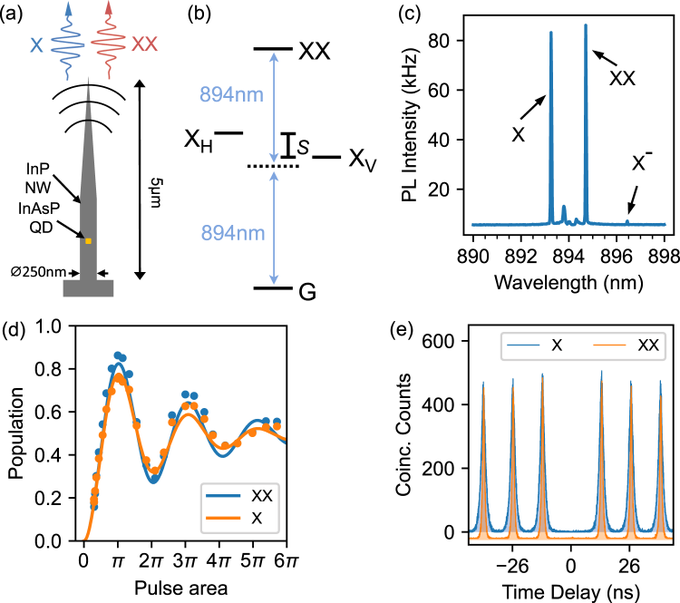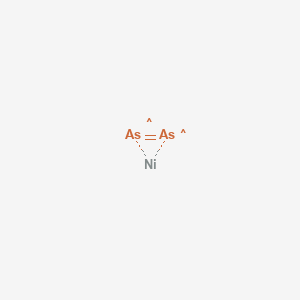SECTION 1. IDENTIFICATION
Product Name: Nickel Arsenide(II)
Product Number: All applicable American Elements product codes, e.g. NI-AS2-05-I
, NI-AS2-05-L
, NI-AS2-05-P
, NI-AS2-05-ST
, NI-AS2-05-WF
CAS #: 12068-61-0
Relevant identified uses of the substance: Scientific research and development
Supplier details:
American Elements
10884 Weyburn Ave.
Los Angeles, CA 90024
Tel: +1 310-208-0551
Fax: +1 310-208-0351
Emergency telephone number:
Domestic, North America: +1 800-424-9300
International: +1 703-527-3887
SECTION 2. HAZARDS IDENTIFICATION
Classification
This chemical is considered hazardous by the 2012 OSHA Hazard Communication Standard (29 CFR 1910.1200)
Skin Sensitization
Category 1
Carcinogenicity
Category 1A
Specific target organ toxicity - (repeated exposure)
Category 1
Label Elements
Signal Word
Danger
Hazard Statements
May cause an allergic skin reaction
May cause cancer by inhalation
Causes damage to organs through prolonged or repeated exposure

Precautionary Statements
Prevention
Obtain special instructions before use
Do not handle until all safety precautions have been read and understood
Use personal protective equipment as required
Contaminated work clothing should not be allowed out of the workplace
Wear protective gloves
Do not breathe dust/fume/gas/mist/vapors/spray
Wash face, hands and any exposed skin thoroughly after handling
Do not eat, drink or smoke when using this product
Response
IF exposed or concerned: Get medical attention/advice
Skin
IF ON SKIN: Wash with plenty of soap and water
If skin irritation or rash occurs: Get medical advice/attention
Wash contaminated clothing before reuse
Storage
Store locked up
Disposal
Dispose of contents/container to an approved waste disposal plant
Hazards not otherwise classified (HNOC)
Very toxic to aquatic life with long lasting effects
WARNING. Cancer - https://www.p65warnings.ca.gov/.
SECTION 3. COMPOSITION/INFORMATION ON INGREDIENTS
Component: Nickel diarsenide
CAS-No: 12068-61-0
Weight %: <=100
SECTION 4. FIRST AID MEASURES
General Advice
If symptoms persist, call a physician.
Eye Contact
Rinse immediately with plenty of water, also under the eyelids, for at least 15 minutes. Get medical attention.
Skin Contact
Wash off immediately with plenty of water for at least 15 minutes. If skin irritation persists, call a physician.
Inhalation
Remove to fresh air. If not breathing, give artificial respiration. Get medical attention if symptoms occur.
Ingestion
Clean mouth with water and drink afterwards plenty of water. Get medical attention if symptoms occur.
Most important symptoms and effects
May cause allergic skin reaction. Symptoms of allergic reaction may include rash, itching, swelling, trouble breathing, tingling of the hands and feet, dizziness, lightheadedness, chest pain, muscle pain or flushing
Notes to Physician
Treat symptomatically
SECTION 5. FIREFIGHTING MEASURES
Unsuitable Extinguishing Media
No information available
Flash Point
No information available
Method -No information available
Autoignition Temperature
No information available
Explosion Limits
Upper
No data available
Lower
No data available
Sensitivity to Mechanical Impact
No information available
Sensitivity to Static Discharge
No information available
Specific Hazards Arising from the Chemical
Do not allow run-off from fire-fighting to enter drains or water courses.
Hazardous Combustion Products
None known.
Protective Equipment and Precautions for Firefighters
As in any fire, wear self-contained breathing apparatus pressure-demand, MSHA/NIOSH (approved or equivalent) and full protective gear.
NFPA
Health 3
Flammability 0
Instability 0
Physical Hazards -
SECTION 6. ACCIDENTAL RELEASE MEASURES
Personal Precautions
Ensure adequate ventilation. Use personal protective equipment as required. Avoid dust formation.
Environmental Precautions
Do not flush into surface water or sanitary sewer system. Do not allow material to contaminate ground water system. Prevent product from entering drains. Local authorities should be advised if significant spillages cannot be contained.
Methods for Containment and Clean Up
Sweep up and shovel into suitable containers for disposal. Keep in suitable, closed containers for disposal.
SECTION 7. HANDLING AND STORAGE
Handling
Wear personal protective equipment/face protection. Ensure adequate ventilation. Do not get in eyes, on skin, or on clothing. Avoid ingestion and inhalation. Avoid dust formation.
Storage
Keep containers tightly closed in a dry, cool and well-ventilated place
SECTION 8. EXPOSURE CONTROLS/PERSONAL PROTECTION
Engineering Measures
Ensure adequate ventilation, especially in confined areas
Personal Protective Equipment
Eye/face Protection
Wear appropriate protective eyeglasses or chemical safety goggles as described by OSHA's eye and face protection regulations in 29 CFR 1910.133 or European StandardEN166.
Skin and body protection
Wear appropriate protective gloves and clothing to prevent skin exposure.
Respiratory Protection
Follow the OSHA respirator regulations found in 29 CFR 1910.134 or European Standard EN 149. Use a NIOSH/MSHA or European Standard EN 149 approved respirator if exposure limits are exceeded or if irritation or other symptoms are experienced.
Hygiene Measures
Handle in accordance with good industrial hygiene and safety practice.
SECTION 9. PHYSICAL AND CHEMICAL PROPERTIES
Physical State
Solid Crystalline
Appearance
Black
Odor
Odorless
Odor Threshold
No information available
pH
No information available
Melting Point/Range
No data available
Boiling Point/Range
No information available
Flash Point
No information available
Evaporation Rate
Not applicable
Flammability (solid, gas)
No information available
Flammability or explosive limits
Upper
No data available
Lower
No data available
Vapor Pressure
No information available
Vapor Density
Not applicable
Specific Gravity
No information available
Solubility
No information available
Partition coefficient; n-octanol/water
No data available
Autoignition Temperature
No information available
Decomposition Temperature
No information available
Viscosity
Not applicable
Molecular Formula
NiAs2 + possible other phases
SECTION 10. STABILITY AND REACTIVITY
Reactive Hazard
None known, based on information available
Stability
Stable under normal conditions.
Conditions to Avoid
Incompatible products.
Incompatible Materials
Strong oxidizing agents
Hazardous Decomposition Products
None under normal use conditions
Hazardous Polymerization
Hazardous polymerization does not occur.
Hazardous Reactions
None under normal processing.
SECTION 11. TOXICOLOGICAL INFORMATION
Product Information
Component Information
Toxicologically Synergistic Products
No information available
Delayed and immediate effects as well as chronic effects from short and long-term exposure Irritation
No information available
Sensitization
No information available
Carcinogenicity
The table below indicates whether each agency has listed any ingredient as a carcinogen.
Mutagenic Effects
No information available
Reproductive Effects
No information available.
Developmental Effects
No information available.
Teratogenicity
No information available.
STOT - single exposure
None known
STOT - repeated exposure
None known
Aspiration hazard
No information available
Symptoms / effects, both acute and delayed
Symptoms of allergic reaction may include rash, itching, swelling, trouble breathing, tingling
of the hands and feet, dizziness, lightheadedness, chest pain, muscle pain or flushing
Endocrine Disruptor Information
No information available
Other Adverse Effects
The toxicological properties have not been fully investigated.
SECTION 12. ECOLOGICAL INFORMATION
Ecotoxicity
Very toxic to aquatic organisms, may cause long-term adverse effects in the aquatic environment. The product contains following substances which are hazardous for the environment.
Persistence and Degradability
Insoluble in water
Bioaccumulation/ Accumulation
No information available.
Mobility
Is not likely mobile in the environment due its low water solubility.
SECTION 13. DISPOSAL CONSIDERATIONS
Waste Disposal Methods
Chemical waste generators must determine whether a discarded chemical is classified as a hazardous waste. Chemical waste generators must also consult local, regional, and national hazardous waste regulations to ensure complete and accurate classification
SECTION 14. TRANSPORT INFORMATION
DOT
UN-No
UN3077
Proper Shipping Name
Environmentally hazardous substances, solid, n.o.s.
Technical Name
(Nickel arsenide)
Hazard Class
9
Packing Group
III
TDG
UN-No
UN3077
Proper Shipping Name
Environmentally hazardous substances, solid, n.o.s.
Hazard Class
9
Packing Group
III
IATA
UN-No
UN3077
Proper Shipping Name
Environmentally hazardous substances, solid, n.o.s.
Hazard Class
9
Packing Group
III
IMDG/IMO
UN-No
UN3077
Proper Shipping Name
Environmentally hazardous substances, solid, n.o.s.
Hazard Class
9
Packing Group
III
SECTION 15. REGULATORY INFORMATION
U.S. Department of Transportation
Reportable Quantity (RQ):
N
DOT Marine Pollutant
N
DOT Severe Marine Pollutant
N
U.S. Department of Homeland Security
This product does not contain any DHS chemicals.
Other International Regulations
Mexico – Grade
No information available
SECTION 16. OTHER INFORMATION
Safety Data Sheet according to Regulation (EC) No. 1907/2006 (REACH). The above information is believed to be correct but does not purport to be all inclusive and shall be used only as a guide. The information in this document is based on the present state of our knowledge and is applicable to the product with regard to appropriate safety precautions. It does not represent any guarantee of the properties of the product. American Elements shall not be held liable for any damage resulting from handling or from contact with the above product. See reverse side of invoice or packing slip for additional terms and conditions of sale. COPYRIGHT 1997-2022 AMERICAN ELEMENTS. LICENSED GRANTED TO MAKE UNLIMITED PAPER COPIES FOR INTERNAL USE ONLY.

 The number of electrons in each of arsenic's shells is 2, 8, 18, 5 and its electron configuration is [Ar] 3d10 4s2 4p3. The arsenic atom has a radius of 119 pm and a Van der Waals radius of 185 pm. Arsenic was discovered in the early Bronze Age, circa 2500 BC. It was first isolated by Albertus Magnus in 1250 AD. In its elemental form, arsenic is a metallic grey, brittle, crystalline, semimetallic solid.
The number of electrons in each of arsenic's shells is 2, 8, 18, 5 and its electron configuration is [Ar] 3d10 4s2 4p3. The arsenic atom has a radius of 119 pm and a Van der Waals radius of 185 pm. Arsenic was discovered in the early Bronze Age, circa 2500 BC. It was first isolated by Albertus Magnus in 1250 AD. In its elemental form, arsenic is a metallic grey, brittle, crystalline, semimetallic solid.  Arsenic is found in numerous minerals including arsenolite (As2O3), arsenopyrite (FeAsS), loellingite (FeAs2), orpiment (As2S3), and realgar (As4S4). Arsenic has numerous applications as a
Arsenic is found in numerous minerals including arsenolite (As2O3), arsenopyrite (FeAsS), loellingite (FeAs2), orpiment (As2S3), and realgar (As4S4). Arsenic has numerous applications as a  The number of electrons in each of nickel's shells is [2, 8, 16, 2] and its electron configuration is [Ar]3d8 4s2. Nickel was first discovered by Alex Constedt in 1751. The nickel atom has a radius of 124 pm and a Van der Waals radius of 184 pm. In its elemental form, nickel has a lustrous metallic silver appearance. Nickel is a hard and ductile
The number of electrons in each of nickel's shells is [2, 8, 16, 2] and its electron configuration is [Ar]3d8 4s2. Nickel was first discovered by Alex Constedt in 1751. The nickel atom has a radius of 124 pm and a Van der Waals radius of 184 pm. In its elemental form, nickel has a lustrous metallic silver appearance. Nickel is a hard and ductile  It is one of four elements that are ferromagnetic and is used in the production of various type of magnets for commercial use. Nickel is sometimes found free in nature but is more commonly found in ores. The bulk of mined nickel comes from laterite and magmatic sulfide ores. The name originates from the German word kupfernickel, which means "false
It is one of four elements that are ferromagnetic and is used in the production of various type of magnets for commercial use. Nickel is sometimes found free in nature but is more commonly found in ores. The bulk of mined nickel comes from laterite and magmatic sulfide ores. The name originates from the German word kupfernickel, which means "false 
